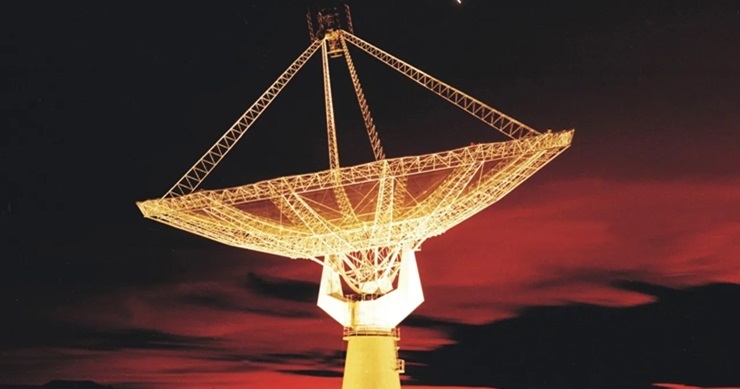Astronomers have detected a radio signal from the most distant galaxy yet, using the Giant Metrewave Radio Telescope in India. The signal was detected at a wavelength known as the “21-centimeter line” or the “hydrogen line,” which is emitted by neutral hydrogen atoms. This detection could mean astronomers are ready to begin investigating the formation of the earliest stars and galaxies.
The signal from the star-forming galaxy SDSSJ0826+5630 was emitted when our 13.8 billion-year-old galaxy was just 4.9 billion years old. The signal allowed the astronomers to measure the galaxy’s gas content and find that its mass is double that of the early galaxy’s visible stars. The team was able to make the record-breaking detection using a phenomenon predicted as part of the theory of general relativity.
This could open up a new way of using long-wavelength radio telescopes to probe the evolution of stars and galaxies and how the early universe evolved into the cosmos we see around us in its current era.
Key Takeaways:
- Astronomers have detected a radio signal from the most distant galaxy yet, which could provide insights into the formation of the earliest stars and galaxies.
- The signal was detected using a phenomenon predicted by Einstein’s theory of general relativity, which suggests that objects with mass warp spacetime, causing light to bend as it passes by objects of tremendous mass.
- This discovery could open up a new way of using long-wavelength radio telescopes to probe the evolution of stars and galaxies and understand the evolution of the early universe.
“Astronomers have detected a radio signal from the most distant galaxy yet. The signal was detected at a special and significant wavelength known as the “21-centimeter line” or the “hydrogen line,” which is emitted by neutral hydrogen atoms. The detection of the hydrogen line from such a galaxy so far away and therefore so early in the universe by the Giant Metrewave Radio Telescope in India could mean astronomers are ready to begin investigating the formation of the earliest stars and galaxies.”
More details: here


Leave a Reply